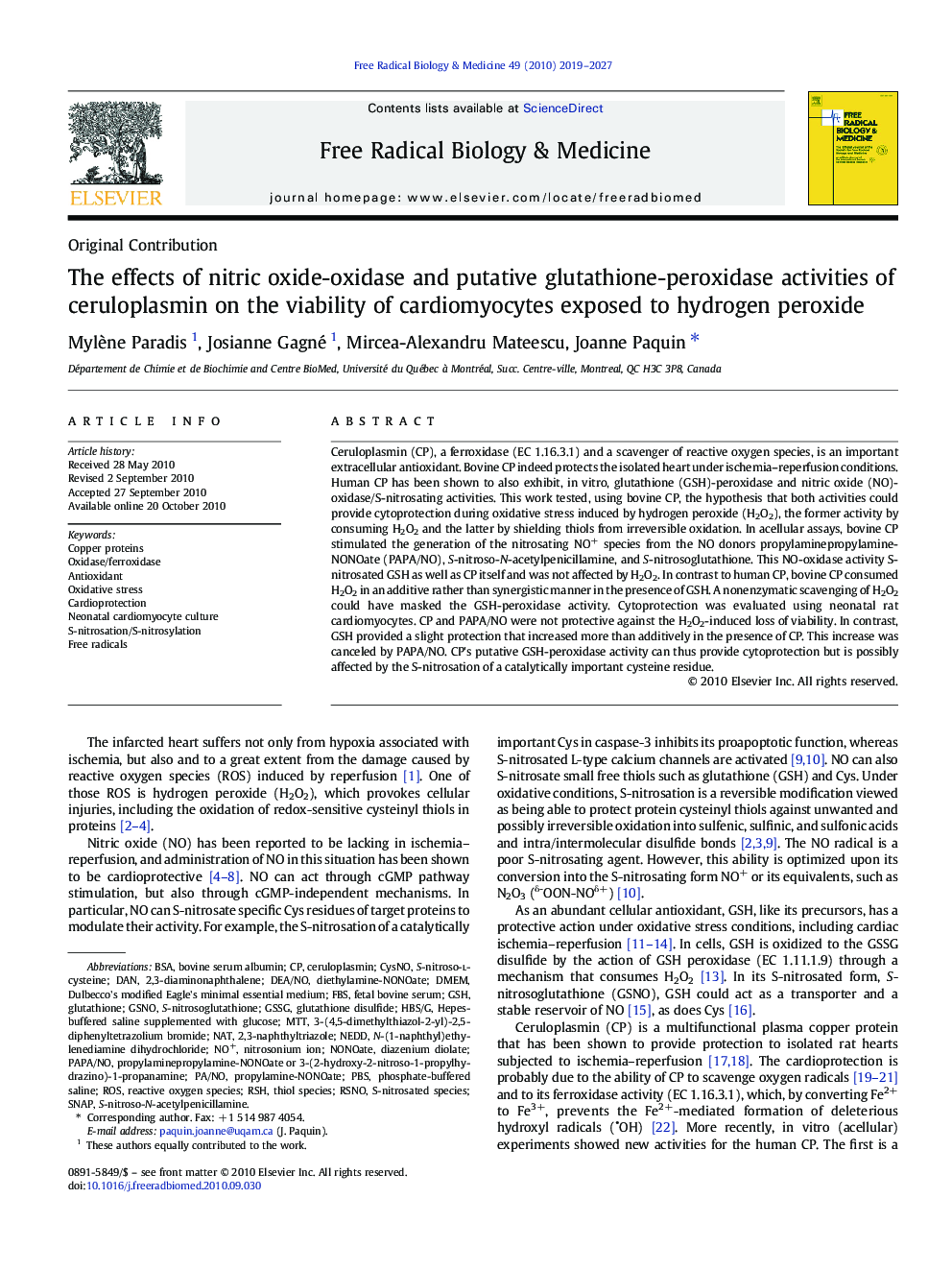| Article ID | Journal | Published Year | Pages | File Type |
|---|---|---|---|---|
| 1909765 | Free Radical Biology and Medicine | 2010 | 9 Pages |
Ceruloplasmin (CP), a ferroxidase (EC 1.16.3.1) and a scavenger of reactive oxygen species, is an important extracellular antioxidant. Bovine CP indeed protects the isolated heart under ischemia–reperfusion conditions. Human CP has been shown to also exhibit, in vitro, glutathione (GSH)-peroxidase and nitric oxide (NO)-oxidase/S-nitrosating activities. This work tested, using bovine CP, the hypothesis that both activities could provide cytoprotection during oxidative stress induced by hydrogen peroxide (H2O2), the former activity by consuming H2O2 and the latter by shielding thiols from irreversible oxidation. In acellular assays, bovine CP stimulated the generation of the nitrosating NO+ species from the NO donors propylaminepropylamine-NONOate (PAPA/NO), S-nitroso-N-acetylpenicillamine, and S-nitrosoglutathione. This NO-oxidase activity S-nitrosated GSH as well as CP itself and was not affected by H2O2. In contrast to human CP, bovine CP consumed H2O2 in an additive rather than synergistic manner in the presence of GSH. A nonenzymatic scavenging of H2O2 could have masked the GSH-peroxidase activity. Cytoprotection was evaluated using neonatal rat cardiomyocytes. CP and PAPA/NO were not protective against the H2O2-induced loss of viability. In contrast, GSH provided a slight protection that increased more than additively in the presence of CP. This increase was canceled by PAPA/NO. CP's putative GSH-peroxidase activity can thus provide cytoprotection but is possibly affected by the S-nitrosation of a catalytically important cysteine residue.
